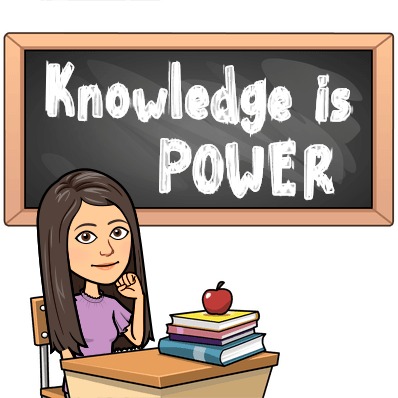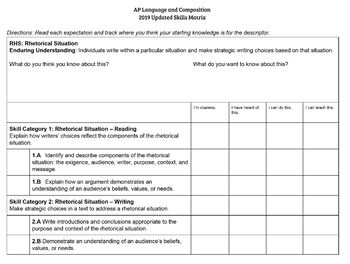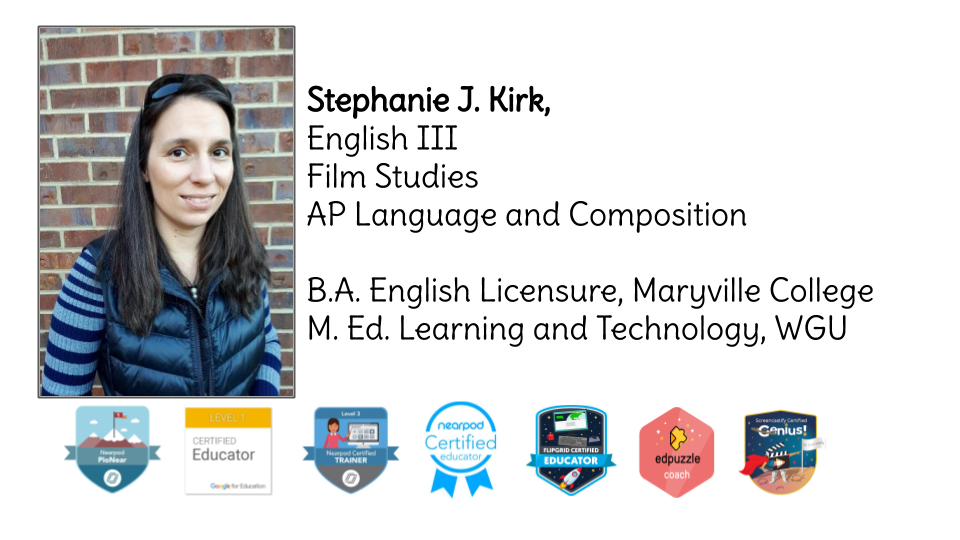Getting students to write is challenging enough, but throw is a typical state writing assessment prompt and all chaos ensues. One thing I have noticed in eight years, two states, and three schools is that, for some reason, behavior and attendance suffer during writing. When it comes to research papers, it is even worse. With Common Core, though, we want to try to include the citations and text-evidence of the typical research formatting because this is what will help them more in college. Knowing how to back up an argument, even verbally, is going to help them in all aspects of life, so it can’t be ignored.
I started the year by having students take a survey of their past experiences in ELA. Two questions stood out when thinking of what to do to assess their writing:
1. What activity to you like least in an English Language Arts class?
A: Of the 16 students present, 13 students said writing.
2. What do you hope Mrs. Kirk does differently to help you this year?
A: Of the 16 students, 9 said some version of “Help us write better.” One student said, “Don’t assign essays you don’t teach us.”
Clearly, these students have a strong hate for writing. So what am I to do? I know I can increase motivation if I can get them to believe in themselves and see me as a resource, but getting to that point will be a challenge.
Thus come the next week of instruction: Chunking a Writing Assessment.
Step 1: I wanted to give the students a writing assessment, but I quickly realized this might lead to a revolt without proper scaffolding. First, I asked students what they hated about essays. Students agreed the prompts “never make sense,” and that gave the starting point. First, I used the gradual release to model how to break down a writing prompt. I looked at a prompt and broke it down for the students. I modeled by reading it, rereading and annotating it, paraphrasing it, and listing starter ideas. Next, we did one together. Finally, I let the students choose between two prompts to analyze with the knowledge they would be expected to actually write an essay on the prompt they chose.
> Interesting realization: Not a single student in the class knew what “expository” meant, so I did a scale back and had students take notes on the four modes of writing.
Step 2: I didn’t want to give students too much help with the essay, but I needed to make them feel they could be successful. I reviewed thesis statement with the students, and we broke it down to topic+argument/opinion=thesis statement. Students then wrote a proposed thesis statement to guide their writing. At this point, student had to commit to writing the essay on one of two texts. While the content and assignment was the same, the story could be chosen by the student in order to create higher motivation and provide a better assessment of student ability prior to teaching a thorough writing unit.
Step 3: Verbally, we reviewed the basic structure of a five paragraph essay. With this fresh on their minds, we looked back at the prompt to plan what we might need to use as main ideas for each body paragraph. As the prompt was reviewing the mood as reflected in the plot, students determined they were going to break the story into beginning, middle, and end. Students then reviewed their plot maps of the proposed texts (both stories) to see which one they understood and could explain to a partner the best. This was helpful because 4 students ended up deciding to switch to the other text before getting too far along.
Step 4: Looking at the evidence they gathered from the beginning, middle, and end of the text, we went back to our prompt analysis to see if we were ready to write the essay. Luckily, students reread their annotations and noticed they needed to include the mood aspect of the writing. Students were using words like “sad” and “happy” on their evidence, so I did a short version lesson of using a higher-level of vocabulary. I also found out I needed to do a short teaching of what mood actually is.
Step 5: Students were given a generic outline suggestion to serve as a checklist for writing the essay. For example, under “Introduction” students were reminded to “Have a hook to get your readers interested,” “Include the TAG (Title-Author-Genre) when writing about literature,” and “Did you have a solid thesis statement?” Students were then released to write the essay in one hour as that was the time which matches the actual assessment.
Druthers:
The student reaction to the CC writing prompt was intense. Part of me felt like breaking down the prompt and creating a writing plan was cheating, but the purpose of this semester is to help make Common Core accessible to our students. If they shut down, they won’t learn anything. In order to raise the bar successfully, it is my job to help scaffold the material in a manner which students can understand and feel they can master. I wanted this lesson to take one class, but it ended up taking two classes to help the students properly. They will have to take a district assessment next month, so hopefully the time taken in this activity will stick and prove helpful on their assessments.
As much as I freak out about pacing with my students this semester, I feel for the teachers and students who will be implementing CC as a directive next semester when the stakes are much higher than they are right now. I feel my students’ frustrations, and I hope they believe me when I tell them this will be helpful to them next year. While I support the idea of a common curriculum to put all students at the same level of academic expectations across the country, I worry about teachers leaving students behind in the fury of the year. Also, I worry about how the teachers will break down the objectives and what skills will be a part of the objective and what skills will be forgotten. I wonder if this was a plan we needed more time to plan for in terms of having students prepared for the jump, and I wonder how scores will look with the first round of CC Achievement Testing. Other vocal spokesmen of CC have said implementation with result in a lower score for students, and I wonder how this will affect the students and the teachers.
When entering a round of increase academic standards, I guess there is no perfect way to bring about such educational reform in a manner that does not hurt anyone involved. As I continue my struggles for this semester in terms of implementing CC and doing that which is best for my students, I will have to put forth more effort and work harder than ever before. We can do this. I know it.


